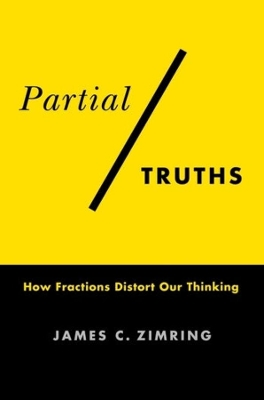
A fast-food chain once tried to compete with McDonald’s quarter-pounder by introducing a third-pound hamburger—only for it to flop when consumers thought a third pound was less than a quarter pound because three is less than four. Separately, a rash of suicides by teenagers who played Dungeons and Dragons caused a panic in parents and the media. They thought D&D was causing teenage suicides—when in fact teenage D&D players died by suicide at a much lower rate than the national average. Errors of this type can be found from antiquity to the present, from the Peloponnesian War to the COVID-19 pandemic. How and why do we keep falling into these traps?
James C. Zimring argues that many of the mistakes that the human mind consistently makes boil down to misperceiving fractions. We see slews of statistics that are essentially fractions, such as percentages, probabilities, frequencies, and rates, and we tend to misinterpret them. Sometimes bad actors manipulate us by cherry-picking data or distorting how information is presented; other times, sloppy communicators inadvertently mislead us. In many cases, we fool ourselves and have only our own minds to blame. Zimring also explores the counterintuitive reason that these flaws might benefit us, demonstrating that individual error can be highly advantageous to problem solving by groups. Blending key scientific research in cognitive psychology with accessible real-life examples, Partial Truths helps readers spot the fallacies lurking in everyday information, from politics to the criminal justice system, from religion to science, from business strategies to New Age culture.
Solid Exposition Of Its Premise. This book is pretty well exactly what its title says it is: an examination of cognitive biases, with fractions as the common access point to all of them. Thought of in this manner, the book is solid, though on its overall points - many political, including repeated attacks on the 45th President of the United States - your mileage will vary considerably. Indeed, on many of the issues Zimring examines, his overall consideration of the issue at hand is actually limited by his devotion to fraction-based thinking, at least within the confines of this text. Ultimately, this book is more a rare take on cognitive biases than anything truly mathematical, and the math here really is simplified such that pretty well anyone capable of reading the text itself can follow the math easily enough. The bibliography clocks in at around 20% of the overall text, which is close enough to the average of similar texts in my experience to be acceptable. Recommended.
Reading updates
-
Started reading
-
Finished reading
-
26 April, 2022:
Reviewed
